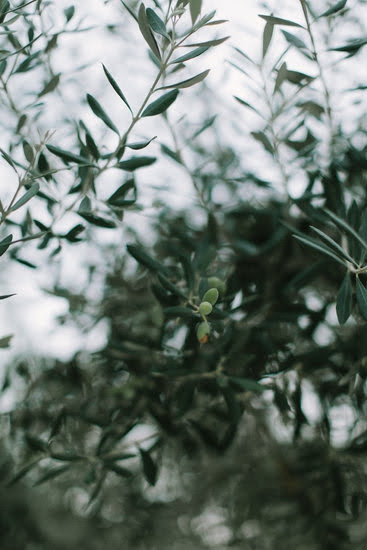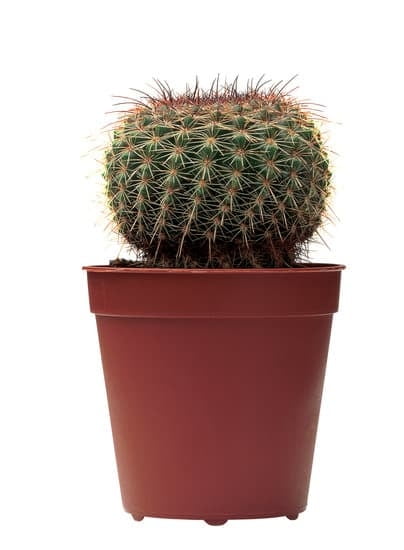Are you looking for some creative flower gardening ideas? Whether you’re a seasoned gardener or a beginner, flower gardening can be a rewarding and enjoyable hobby.
In this article, we will explore various flower gardening ideas, including tips for choosing the right flowers, creative arrangement ideas, maintaining a healthy garden, seasonal gardening tips, and much more. If you’re ready to bring some beauty and color to your outdoor space, read on for some inspiration and guidance on flower gardening.
When it comes to flower gardening, there are endless possibilities for creating a stunning display of colors and blooms. From selecting the right flowers for your specific garden conditions to designing beautiful arrangements and incorporating edible flowers into your space, there are plenty of options to explore. Whether you have a small backyard or a spacious outdoor area, there’s something for everyone when it comes to flower gardening.
In this article, we will cover everything from basic flower gardening tips for beginners to more advanced DIY projects for garden decor. Additionally, we’ll provide guidance on how to design a butterfly and pollinator-friendly garden as well as incorporating seasonal flowers into your landscape. Get ready to unleash your creativity and take your flower gardening skills to the next level.
Choosing the Right Flowers for Your Garden
When it comes to flower gardening ideas, one of the most crucial decisions you will make is choosing the right flowers for your garden. With countless options available, it can be overwhelming to narrow down the choices. However, by considering factors such as climate, soil type, and sunlight exposure, you can select flowers that thrive in your specific growing conditions.
To help you make the best choices for your garden, here are some tips for choosing the right flowers:
1. Consider Your Climate: Different flowers thrive in different climates. Research which flowers are well-suited to your specific climate and growing zone before making any purchases.
2. Assess Your Soil Type: Some flowers prefer rich, well-draining soil while others thrive in poor or sandy soils. Understanding your soil type will help you choose flowers that will flourish in your garden.
3. Evaluate Sunlight Exposure: Take note of how much sunlight each area of your garden receives throughout the day. This will help you identify suitable locations for sun-loving or shade-tolerant flowers.
By taking these considerations into account, you can ensure that the flowers you choose will not only survive but also thrive in your garden environment. Whether you opt for vibrant annuals like marigolds and petunias or perennial favorites such as roses and lilies, selecting the right flowers is essential for a successful and visually stunning flower garden.
Creative Flower Arrangement Ideas
If you want to take your flower gardening to the next level, consider getting creative with your flower arrangement ideas. Whether you are arranging flowers in a vase for your home or creating stunning floral displays in your garden, there are plenty of possibilities to explore. Here are some creative flower arrangement ideas to inspire you:
- Wildflower Bouquet: Create a natural and whimsical bouquet by gathering an assortment of wildflowers from your garden or local area. Mix different colors, shapes, and sizes for an eclectic and charming arrangement.
- Succulent and Flower Centerpiece: Combine colorful blooms with various succulents for a unique and long-lasting centerpiece. The contrasting textures and forms will add interest to any table setting or outdoor gathering.
- Vertical Flower Garden: Utilize wall-mounted planters or create a trellis system for climbing flowers like morning glories, clematis, or sweet peas. This vertical garden not only saves space but also adds visual appeal to any outdoor area.
In addition to these ideas, consider experimenting with different containers, such as vintage teapots, mason jars, or even upcycled items like old boots or wheelbarrows. Don’t be afraid to think outside the box and let your creativity flow when arranging flowers in your garden or home.
When it comes to flower gardening ideas for creative arrangements, the possibilities are endless. Whether you’re a seasoned gardener looking for fresh inspiration or a beginner eager to try something new, experimenting with unique flower arrangements can add beauty and charm to any outdoor space or interior decor.
Tips for Maintaining a Healthy Flower Garden
Once you have successfully planted your flowers, it is important to maintain a healthy garden to ensure they thrive. There are a few key tips to keep in mind when it comes to maintaining your flower garden. First, regular watering is crucial, especially during dry spells or hot weather.
It’s important not to overwater, as this can lead to root rot and other issues. A good rule of thumb is to water deeply once a week, rather than shallowly every day.
In addition to watering, it’s essential to keep an eye on the health of your plants. This includes checking for any signs of pests or disease, such as yellowing leaves or spots on the foliage. If you notice any issues, it’s best to address them promptly before they spread and potentially harm the entire garden. Using organic fertilizers can also help keep your flowers healthy and encourage blooming throughout the season.
Another important aspect of maintaining a healthy flower garden is proper pruning and deadheading. Regular pruning helps promote new growth and keeps the plants looking tidy. Deadheading, or removing spent blooms, encourages the plant to produce more flowers and prevents energy from going into seed production. These simple practices can make a big difference in the overall health and appearance of your flower garden.
Finally, taking steps to protect your flower garden from extreme weather conditions can help maintain its health. This may include providing shade during heatwaves or using row covers during frosty nights. By staying proactive and attentive to the needs of your plants, you can enjoy a thriving and beautiful flower garden all season long.
Flower gardening ideas aren’t limited solely to choosing and arranging flowers in a patch – maintenance is crucial for ensuring that they stay vibrant throughout each season.
Seasonal Flower Gardening Ideas
One of the most exciting aspects of flower gardening is the opportunity to change your garden with each season. By selecting flowers that bloom at different times of the year, you can enjoy a colorful and vibrant garden all year round.
When planning your seasonal flower garden, it’s important to consider the climate and weather patterns in your area. For example, some flowers thrive in the cool temperatures of spring and fall, while others are more suited for the heat of summer.
In spring, you can plant bulbs like daffodils, tulips, and hyacinths for a burst of color after a long winter. These flowers are easy to grow and can be planted in containers or directly into the ground. As the weather warms up, you can transition to summer flowers like roses, lilies, and sunflowers. These flowers love the sun and will provide a beautiful backdrop for outdoor gatherings and picnics.
In the fall, consider planting an autumn garden with flowers like mums, asters, and pansies. These plants thrive in cooler temperatures and will add a pop of color to your garden before winter arrives. By planning ahead and understanding which flowers bloom during each season, you can create a stunning and ever-changing display in your flower garden throughout the year.
| Season | Example Flowers |
|---|---|
| Spring | Daffodils, Tulips, Hyacinths |
| Summer | Roses, Lilies, Sunflowers |
| Fall | Mums, Asters, Pansies |
Container Gardening With Flowers
Container gardening has become increasingly popular, especially for those who have limited outdoor space or want to add a pop of color to their patio or balcony. When it comes to flower gardening ideas, containers offer flexibility and versatility. Whether you’re a beginner or experienced gardener, container gardening allows you to experiment with different flower varieties, colors, and arrangements.
When choosing flowers for your containers, consider the amount of sunlight your space receives. For sunny areas, vibrant options like petunias, geraniums, and marigolds thrive in the sunshine. If your space is shadier, impatiens, begonias, and fuchsias are great choices for adding color and interest. Mixing different types of flowers in one container can create a visually appealing display that adds variety and texture to your garden.
To maintain a healthy container garden, it’s important to ensure proper soil drainage and watering. Use a high-quality potting mix that provides good drainage while retaining moisture. Water your containers regularly-daily during hot weather-to keep the soil consistently moist but not waterlogged. Adding a layer of mulch on top of the soil can help retain moisture and prevent weeds from sprouting.
For added creativity in your container gardening with flowers, consider mixing in some edible plants such as herbs or vegetables alongside your flowering plants. This not only provides an attractive display but also offers the practical benefit of having fresh herbs or vegetables at your fingertips for cooking. With the right care and attention, container gardening with flowers can elevate any outdoor living space and provide an abundance of natural beauty.
By incorporating these flower gardening ideas into your container garden, you can enjoy the beauty of blossoming blooms while maximizing limited space. With careful selection and maintenance of your containers filled with vibrant flowers, you can create a stunning floral display that enhances any outdoor area where they are placed.
Incorporating Edible Flowers Into Your Garden
Flowers are not only beautiful to look at, but they can also be a delicious and unique addition to your garden. Incorporating edible flowers into your garden can add both visual appeal and an unexpected culinary element to your outdoor space. Whether you are looking to elevate your meals or simply want to experiment with new flavors, there are several ways you can incorporate edible flowers into your garden.
Choosing Edible Flowers
When selecting edible flowers for your garden, it is important to choose varieties that are not only safe for consumption but also pleasing to the taste buds. Some popular options include nasturtiums, pansies, violets, roses, and lavender.
These flowers not only add pops of color to your garden but also offer unique flavors ranging from peppery and spicy to sweet and floral. When choosing edible flowers, it is essential to ensure that they have been grown organically and have not been treated with any harmful chemicals.
Ways to Use Edible Flowers
Once you have selected the right edible flowers for your garden, there are several creative ways you can incorporate them into your culinary endeavors. Edible flowers can be used as garnishes for salads, cocktails, and desserts. They can also be candied or used as a colorful addition to ice cubes.
Additionally, some edible flowers can be infused into oils or vinegars for a subtle hint of flavor in dressings and marinades. The possibilities are endless when it comes to experimenting with edible flowers in the kitchen.
Tips for Growing Edible Flowers
In order to successfully grow edible flowers in your garden, it is important to provide them with the right growing conditions. Most edible flowers thrive in well-drained soil and plenty of sunlight. It is also crucial to research each individual flower variety’s specific needs in terms of watering and care.
By dedicating some time and attention to cultivating these unique blooms, you can enjoy a bountiful harvest of both beauty and flavor in your own backyard. With planning and dedication, incorporating edible flowers into your garden can truly enhance both the visual appeal and taste sensations of your outdoor space.
By following these tips for incorporating edible flowers into your garden, you can not only create a visually stunning landscape but also infuse a new level of creativity into your culinary adventures. From selecting the right varieties to using them in innovative ways, adding edible flowers will provide endless possibilities for both your garden and kitchen alike.
Designing a Butterfly and Pollinator-Friendly Flower Garden
When it comes to creating a flower garden, it’s not just about the visual appeal of vibrant blooms and lush greenery. A butterfly and pollinator-friendly flower garden can provide a valuable habitat for these important creatures while adding an enchanting allure to your outdoor space. By incorporating specific types of flowers and plants, as well as providing essential resources, you can create a welcoming environment for butterflies, bees, and other pollinators.
Choose Native Plants
One key element in designing a butterfly and pollinator-friendly flower garden is to select native plants. Native plants are naturally adapted to the local environment and are more likely to attract native butterflies, bees, and other beneficial insects. Some examples of native plants that are attractive to butterflies include milkweed, coneflower, black-eyed susan, and butterfly bush. Researching the native plants in your region will help you make informed choices when planning your garden.
Create a Variety of Habitats
In order to cater to different species of butterflies and pollinators, it’s important to create diverse habitats within your garden. This can be achieved by incorporating different types of flowers with varying colors, shapes, and bloom times. Additionally, including features such as a water source like a small pond or bird bath, as well as providing shelter from wind and predators will make your garden more inviting to butterflies and other beneficial insects.
Avoid Pesticides
To maintain a healthy ecosystem for butterflies and pollinators in your flower garden, it’s crucial to avoid using harmful pesticides that can harm these insects. Instead, opt for natural methods of pest control or use insecticidal soaps if absolutely necessary.
Creating a balanced ecosystem where beneficial insects can thrive is essential for sustaining a successful butterfly and pollinator-friendly flower garden. Implementing these practices will not only benefit the environment but also provide you with an opportunity to observe these beautiful creatures up close in your own backyard.
Flower Gardening for Beginners
For those new to flower gardening, it can be an exciting yet overwhelming task to start your own garden. However, with the right guidance and a step-by-step approach, even beginners can create a stunning and flourishing flower garden.
First, it’s essential to choose the right location for your flower garden. Most flowers require ample sunlight, so look for an area in your yard that receives at least six hours of direct sunlight each day. Once you’ve found the perfect spot, it’s time to prepare the soil. Make sure the soil is well-draining and has plenty of organic matter to support healthy plant growth.
Next, decide on which flowers to plant. Consider factors such as your climate, the amount of maintenance you’re willing to do, and the aesthetic you want for your garden. Some easy-to-grow flowers for beginners include marigolds, sunflowers, and zinnias. It’s also important to consider the height and spread of each plant to ensure they have enough space to grow without overcrowding each other.
After planting your chosen flowers, it’s crucial to establish a regular watering schedule and monitor for any signs of pests or diseases. Regular weeding and deadheading (removing spent blooms) will also help maintain a healthy flower garden throughout the growing season.
By following this step-by-step guide for beginners, anyone can enjoy the rewards of a beautiful flower garden with a little patience and dedication. With these flower gardening ideas in mind, you’ll be well on your way to creating a flourishing oasis in your own backyard.
DIY Flower Garden Projects and Crafts for Garden Decor
In conclusion, there are countless flower gardening ideas to inspire and enhance any garden space. From choosing the right flowers and creating beautiful arrangements to maintaining a healthy garden and designing for butterflies and pollinators, the possibilities are endless. Whether you’re a seasoned gardener or just starting out, there is something for everyone to explore in the world of flower gardening.
One way to add a personal touch to your flower garden is through DIY projects and crafts for garden decor. From homemade stepping stones and colorful plant markers to hand-painted flower pots and unique garden ornaments, there are plenty of creative ways to add charm and personality to your outdoor space. These DIY projects not only allow you to showcase your creativity, but they also provide an opportunity to involve the whole family in the joys of gardening.
Furthermore, as you delve into the world of flower gardening ideas, don’t be afraid to experiment with new techniques, plants, and design concepts. Whether it’s exploring seasonal gardening ideas or incorporating edible flowers into your garden, there is always room for innovation and discovery in the world of flower gardening. So go ahead, let your imagination run wild as you embark on this fulfilling journey of cultivating beauty and tranquility in your own backyard.

Welcome to my gardening blog! I am passionate about plants and enjoy sharing my knowledge and experiences with others. In this blog, I will write about everything related to gardening, from tips on how to get started to updates on my own garden projects.





